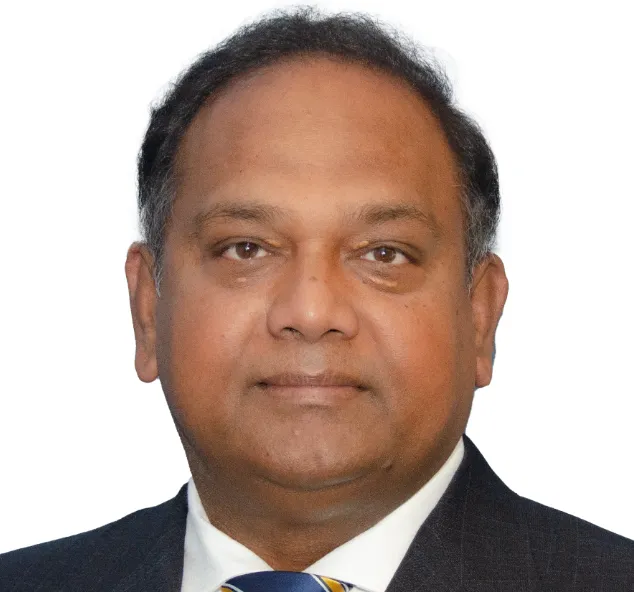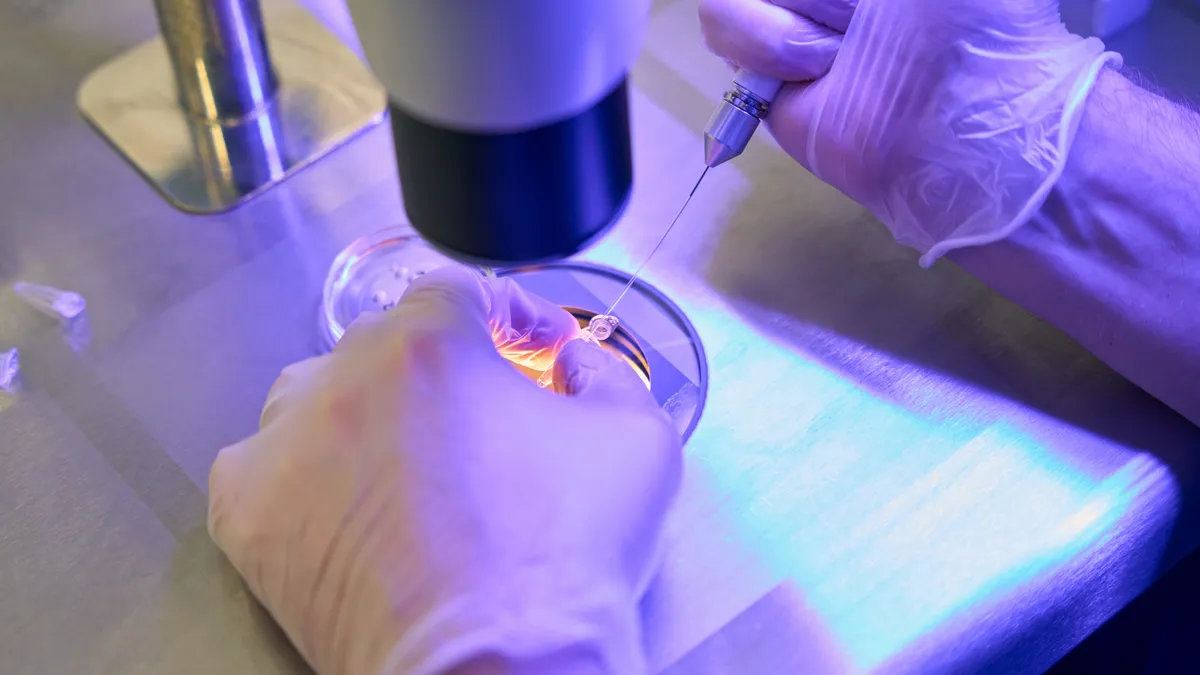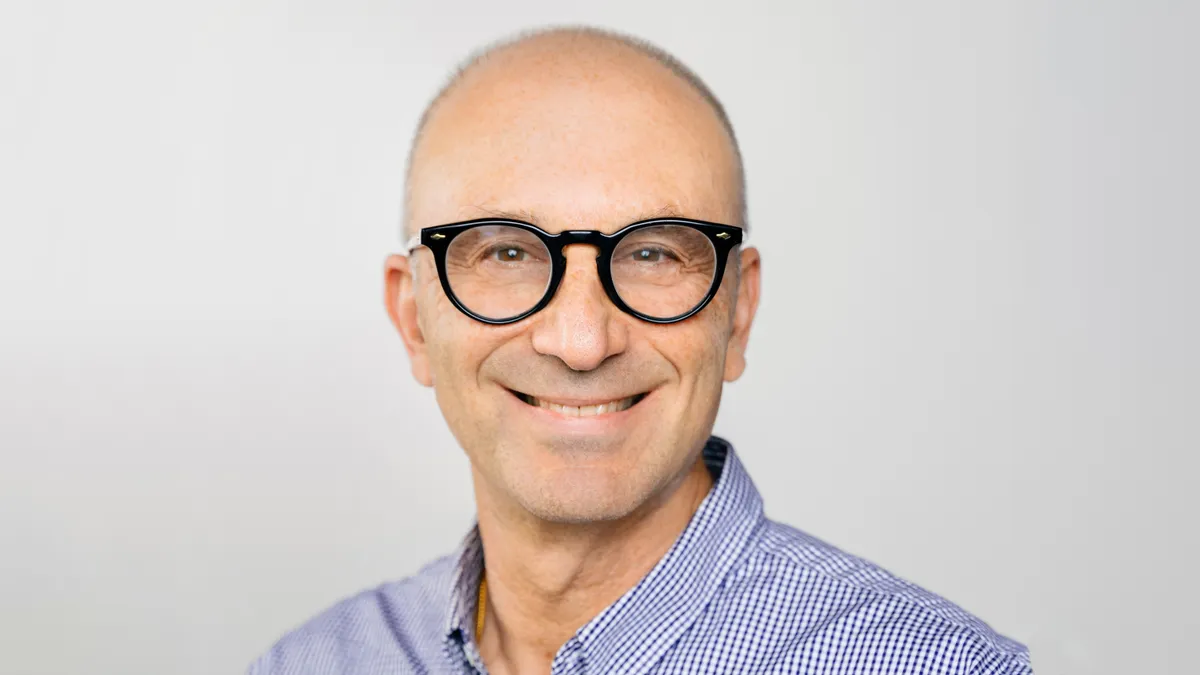Regenerative medicine is a booming industry.
Already, dozens of regenerative medicine products have been approved around the world, including cell, gene and tissue-engineered therapies. They range from Breyanzi, Bristol Myers Squibb’s CAR T-cell therapy for lymphoma, to Casgevy, the sickle cell disease treatment from Vertex Pharmaceuticals and CRISPR Therapeutics that became the first-ever FDA approved CRISPR-based treatment in December.
Overall, the generative market is expected to grow from $16 billion in 2023 to $49 billion by 2028, according to an analysis from MarketsandMarkets.
It’s a space that’s part of a broader shift in the current pharma industry paradigm of mass-produced medicines focused on symptoms to individualized treatments tailored to a specific person and condition, said Chandan Sen.

Sen is the director of the University of Pittsburgh’s McGowan Institute for Regenerative Medicine, which was founded in 1992 and is, what he calls, “one of the long-standing institutes in the field of regenerative medicine in this country and the world.”
“We in the healthcare space today heavily rely on pharmacological intervention,” Sen said. “That is all going to change in a very big way.”
For instance, instead of insulin injections for managing diabetes, regenerative medicine could lead to “a reliable source of insulin that the body would produce,” Sen said.
Last year, a team at the University of Alberta published results from a preclinical study showing that treating progenitor cells with an anti-tumor drug inhibiting ATK signaling, which could create insulin-producing cells from a patient’s own blood.
“What we’re trying to do here is peer over the horizon and try to imagine what diabetes care is going to look like 15, 20, 30 years from now. I don’t think people will be injecting insulin anymore,” Dr. James Shapiro, a professor at University of Alberta and one of the study’s authors, said in a press release.
Such a shift could result in more than just a change in treatment options.
“With these types of solutions, you’re talking about a different type of manufacturing, a completely different type of regulatory approval process, a very different marketplace,” Sen said. “These are a completely different set of scenarios of how healthcare would be delivered.”
The cutting edge
Sen took the helm at MIRM in 2023 after leading the Indiana Center for Regenerative Medicine and Engineering and Ohio State’s Center for Regenerative Medicine & Cell Based Therapies. He brought with him a team of more than 30 researchers and lab personnel. His move also expanded the institute’s reach to include clinical research sites throughout Pennsylvania and one in Maryland.
Today, MIRM’s work includes programs like the National Institutes of Health-funded Diabetic Foot Consortium, a multicenter network to study diabetic foot ulcers as well as a critical limb ischemia program that’s developing cell therapies to help patients avoid amputation.
"Going forward, you’re going to see … for a lack of a better expression, body parts in a box waiting to be plugged back into you."

Chandan Sen
Director, McGowan Institute for Regenerative Medicine
Sen is pursuing regenerative medicine solutions that work without using stem cells, which he considers too unpredictable and inconsistent, since only some of them reliably become the target cells. When they’re out of the controlled environment of a petri dish and enter the body, those cells often “go awry,” sometimes even becoming cancerous, Sen said.
“Stem cells show such high plasticity and they’re so powerful … that it is extremely dangerous to inject stem cells into people because what the stem cells will become largely depends on the environment,” he said. “I am more excited about the technology where you can repurpose non-stem cells to compensate for the lost function.”
His team is working on tissue nano-transfection, a non-invasive nanochip device that reprograms one type of tissue into another with a one-second touch and an electric field applied to the body.
“We have been able to make new blood vessels [and] new nerve cells,” Sen said of the TNT technology, for which he and his team received an Edison Award in 2018.
TNT is fast, non-invasive, requires no lab-based procedures, and can be delivered at the point of care. Its potential uses include burn healing, reducing diabetes complications, such as foot ulcers, treating injured soldiers and re-growing damaged and diseased tissue.
A sea change in healthcare delivery
Today, Sen said many of the regenerative medicine therapies on the market are relatively simple, such as tissue-engineered skin, which is more like “advanced dressing,” since it provides biological support but doesn’t integrate with the body. Future generations of the treatment could be incorporated with the body, which would reduce the risk of immune system rejection, Sen said.
“We’re going to be seeing more [of] the body being used as a bioreactor,” Sen said.
Cutiss, a regenerative medicine and tissue engineering company is also developing a personalized bioengineered human skin graft that creates multiple layers of skin tissue and can grow with the patient. It can be bioengineered in large quantities from a sample of healthy skin the size of a postage stamp.
“I can use a stamp and give you back a carpet of skin,” Daniela Marino, Cutiss’ CEO and co-founder, told PharmaVoice last year.
The company recently announced positive one-year follow-up data from its phase 2 clinical trial of the product in adult and adolescent severe burn patients.
Such technology could eventually be applied to everything from organs to nerve cells.
“Going forward, you’re going to see … for a lack of a better expression, body parts in a box waiting to be plugged back into you,” he said.
With these types of treatments, Sen said the market will gradually move away from a model where treatments work in most people, to treatments that work “in the particular case under question.”
Sen acknowledged that in addition to needing a new regulatory and manufacturing framework, cost will also be a barrier at first. Indeed, Casgevy comes with a $2.2 million list price and the U.K. National Institute for Health and Care Excellence recently said it needed more data before it would recommend funding the product.
“We are no longer running in a straight line,” Sen said. “We are turning a corner. And whenever you turn a corner, and the benefits are so dramatically much better than what it used to be in the past, of course, it comes at a high cost.”
With “understanding and investment that that is what the future is going to look like,” Sen believes cost won’t always be a barrier for regenerative medicine products.
“It will never work in a [large] population and that’s a problem. A problem that will lead to higher costs in the beginning,” he said. “But … over time, that high cost, like everywhere else, will become low cost.”




















